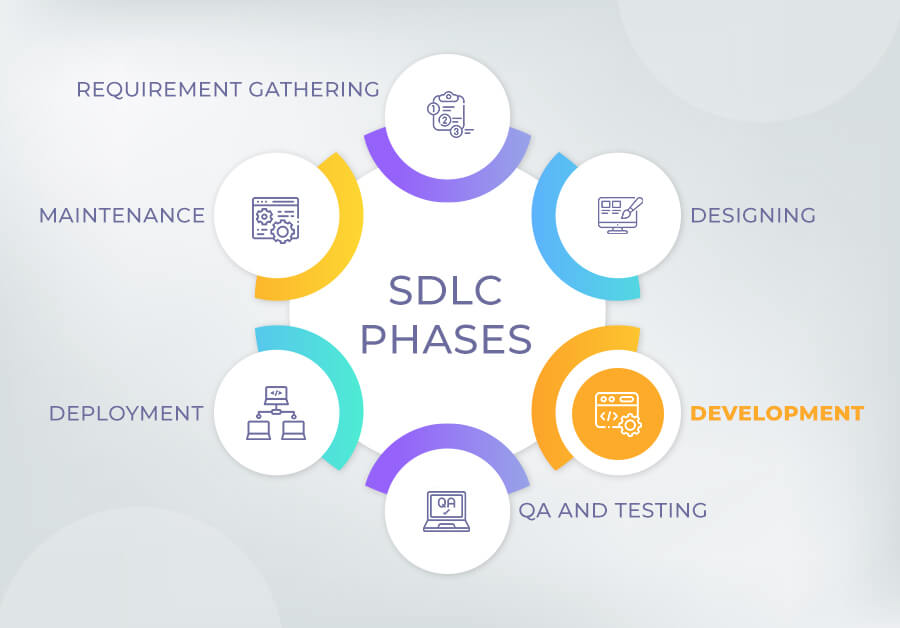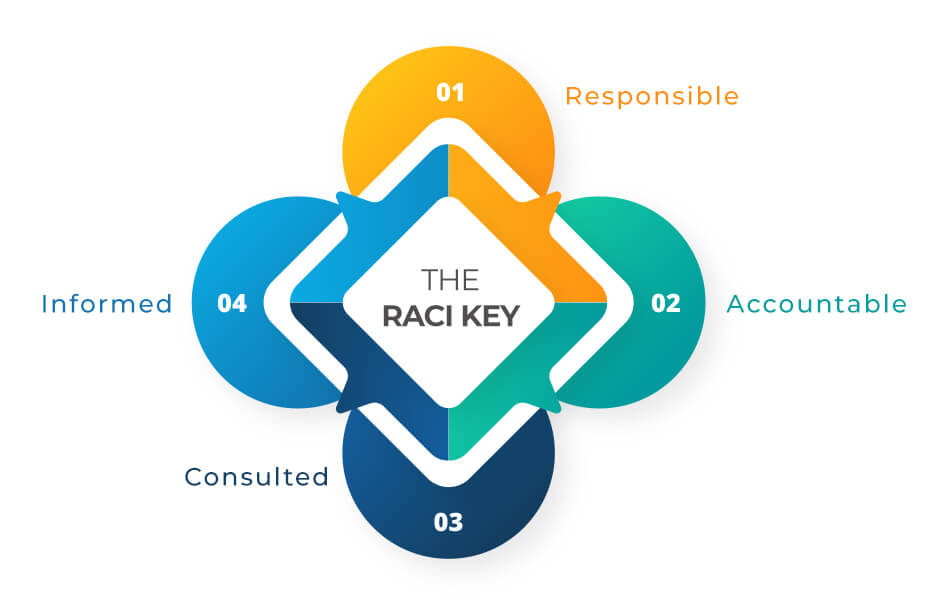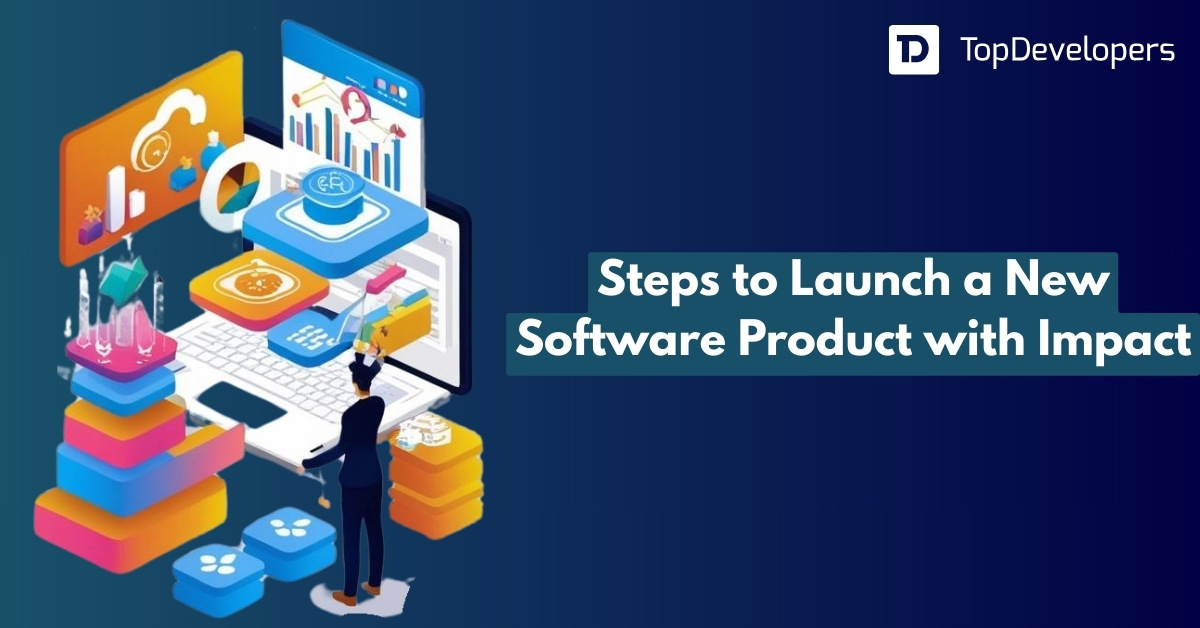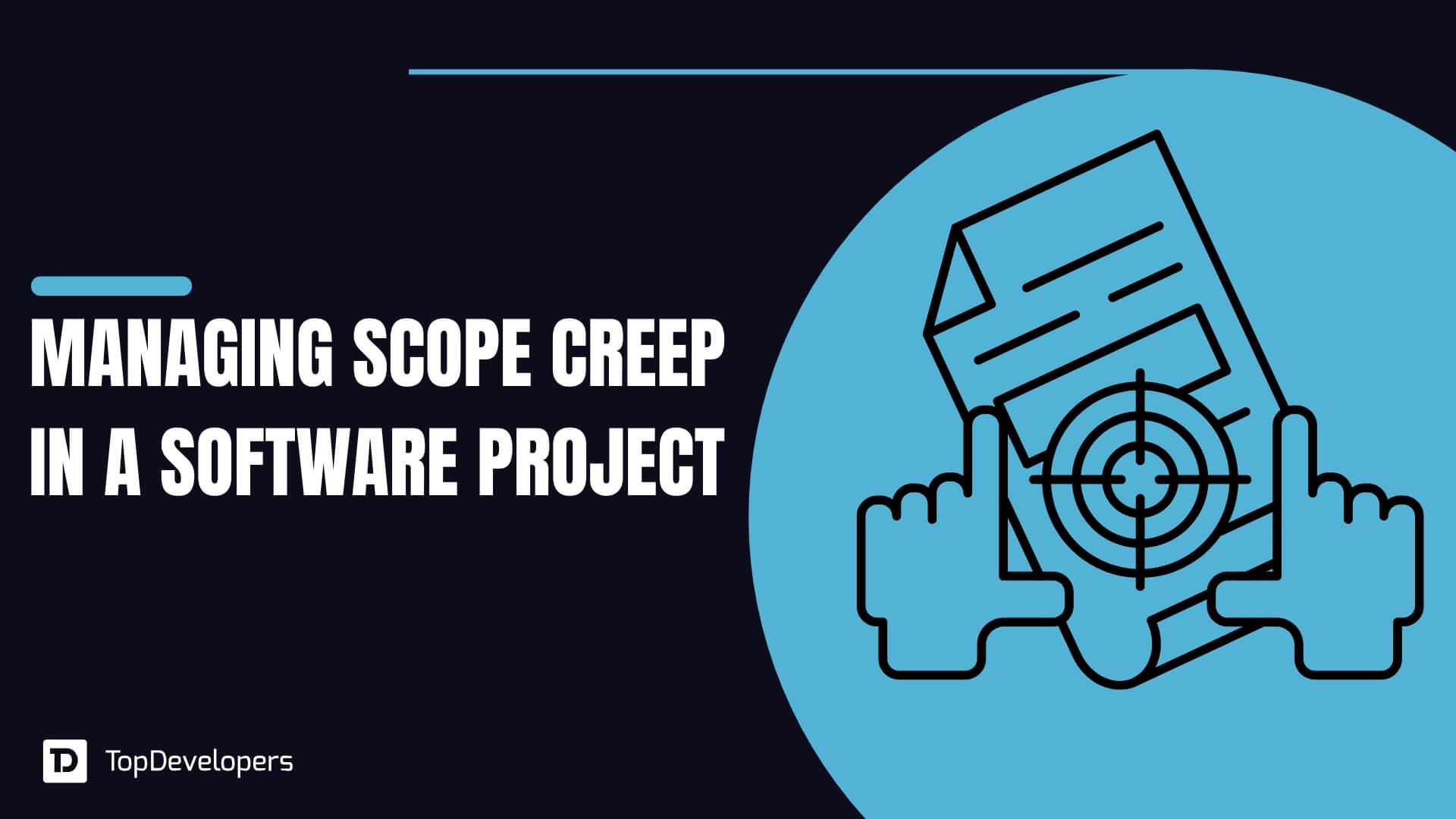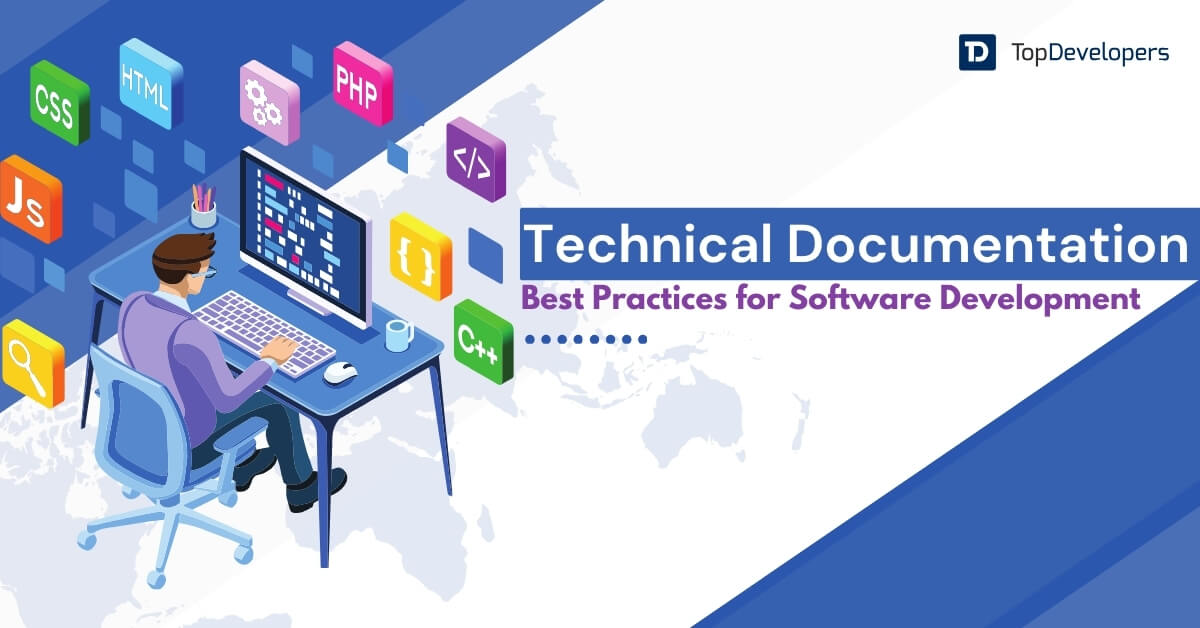
SDLC is an acronym for System or Software Development Life Cycle, and it is the backbone of any digital product, Software, Website, or Mobile app) building. The phase is not just important for software engineers, software developers, and designers, but also for product owners i.e., businesspeople who will finally receive a customized product.
Just like the Request for Proposal documents, it is important for all stakeholders to have some knowledge of the SDLC development phase also so that they can get an assurance of the digital product’s quality.
Table of Contents
- What is the development phase of SDLC?
- The development phase of SDLC
- What are the objectives of the development phase of SDLC?
- What are the duties of software developers during the SDLC development phase?
- The RACI key
- What tasks are finished after the development stage?
- How can development phase deliverables improve the SDLC process?
- Key Takeaways from the Development Phase of SDLC!
What is the development phase of SDLC?
The entire software development (a digital product) can be divided into several phases that start with requirement gathering and ends with deployment and maintenance of the software product built. For each stage, the documentation of software development is assured so that the product is aligned with business objectives. Here are the six main phases of SDLC –
Requirement gathering: In this phase of SDLC, all the requirements of software development are gathered and they are mapped with business objectives. A blueprint (that talks about how the software product will be) is created and documented.
Designing: In the designing phase, the design of the software product is crafted. UI/UX Designers focus on building the best UI/UX to make the product engaging and easy to use.
Development: This is the core of the entire software development life cycle. The tech stack is assured and all necessary resources are kept in place for this crucial software development phase. We are going to discuss this phase in detail later.
QA and testing: After the software product is built, quality assurance is achieved by a thorough investigation of coding practices. Vigorous tools are applied for testing the efficacy and usability of the software.
Deployment: The final stage of software development ends with the deployment of the product on a particular platform or predefined environment. The product is officially released and ready to be used by stakeholders or specific users.
Maintenance: This is an extension of the SDLC process where maintenance is assured to keep the product up and running. Maintenance would also include regular updates and bug fixing if any.
The development phase of SDLC
As mentioned earlier, the core part or the pillar of the entire software development is the development phase wherein standard coding practices are followed by software developers and engineers. The development phase is actual software program writing and following SDLC guidelines, one can track changes in the code even in the future. This phase is crucial to achieving the goal and business objective of the digital product.
What are the objectives of the development phase of SDLC?
The software development team follows standard coding practices and documentation. The team would appraise and support perfect documentation of the development phase because it helps them understand the product and its programming. It is a primary source for any software developer (now or in the future) to go through the following procedure of software product design and development and sync in. Here are the purposes of the SDLC development phase –
- To build a flawless system
- To integrate and test units into larger components
- Providing a seamless technical environment
- Assurance of quality achievement to go into the testing phase
The primary goal of the development phase in SDLC is to achieve an optimum level of software development architecture. This is done by transforming the system design into a working environment without losing the objectives and scope of the product. It is like adding a soul to a beautiful body and making it function or work flawlessly. At the end of the SDLC development phase, all the documents shall be used for the testing phase.
What are the duties of software developers during the SDLC development phase?
Passing through the most crucial stage of SDLC requires a dedicated approach by software developers. During the documentation development, the software programmers’ team should perform specific jobs listed below –
- Refer to previous documents for references for similar coding standards and fetch the benefits of saving time and effort.
- Draft the documents that are unambiguous yet comprehensive to include the details of the process followed in the development phase.
- Build organized document repositories that include critical information about the development stage. The ultimate aim of this is to provide easy access and reference to the phase to all team members.
- Check software development documents for any flaws or indistinctness that may confuse readers.
- Assure that sample deliverables are available to present to owners. Such deliverables may have scope to expand or limit depending on the feedback received from stakeholders and other users.
When the development teams perform their duties properly, the documentation of this phase shall produce a foolproof roadmap to the success of the product in the coming SDLC stages.
The RACI key
Experts in software development at the Department of Information Technology (DoIT) Maryland suggest following the RACI key to assure that the development phase in SDLC follows standard practices. The RACI key would set everybody’s roles and responsibilities.
Responsible
It describes the role of team members who shall execute several actions to achieve the overall goal of the software product.
Accountable
In this, accountability and ownership of several tasks and activities that lead to the final development phase deliverables are defined and fixed.
Consulted
It describes the roles of subject experts or domain experts for their valuable inputs in the development phase. Their inputs help software developers execute the stage flawlessly.
Informed
This part describes the roles of people who receive information and convey it to concerned stakeholders.
What tasks are finished after the development stage?
The development team completes some crucial tasks at the end of the development stage of SDLC process.
- Documentation for the system design
- Documentation for system security
- Disaster recovery backing plan
- Drafts of the unit and integration testing
- Draft of conversation plan
- Draft of data retention and implementation plan
- Drafts of operations, maintenance, and training plans
How can development phase deliverables improve the SDLC process?
Successfully achieved development phase for SDLC assures that the product is clearly defined, strategically planned, and well communicated. It is the development stage where the product would grow its control, features, and facilities that will be tactfully handled by the building team of the software product.
The SDLC’s development period shall give a clear idea and structure to developers and associates who shall now perform testing on the product. Here are the benefits of final products built at the end of this stage –
- Creates ubiquitous understandings so that all developers are on the same board
- Facilitates further action as the project gets more complex
- Provides in-depth insight to seniors about possible risks or impediments
- Encourages developers to master coding for future references of the similar components programming
- Provides a professional environment through the documentation for knowledge transfer in case there is a change in software developers. Also, it helps get budgetary ideas or assessment activities for young coders
The software development stage, known as the coding or implementation stage, divides tasks into modules or units, and the roles of developers are defined. This longest stage follows standard practices to assure a superlative software development team management that renders quality pare excellence while customizing the product as per the business logic applied.
Key Takeaways from the Development Phase of SDLC!
In almost all software development models, the backbone of the SDLC procedure is the development stage and at the end of this phase, software developers get a complete working information system created in a functional environment. The product after this stage seeks approval from authorities to get into the testing phase. If the product enters the testing phase, it indicates that the SDLC process’ development stage has been achieved successfully and documented quite well.
 Avantika Shergil
| Jan 17, 2023
Avantika Shergil
| Jan 17, 2023
Avantika Shergil is a technology enthusiast and thought leader with deep expertise in software development and web technologies. With over 8 years of experience analyzing and evaluating cutting-edge digital solutions, Avantika has a knack for demystifying complex tech trends. Her insights into modern programming frameworks, system architecture, and web innovation have empowered businesses to make informed decisions in the ever-evolving tech landscape. Avantika is passionate about bridging the gap between technology and business strategy, helping businesses build customized software and website, and understand about different tools to leverage effectively for their ventures. Explore her work for a unique perspective on the future of digital innovation.
